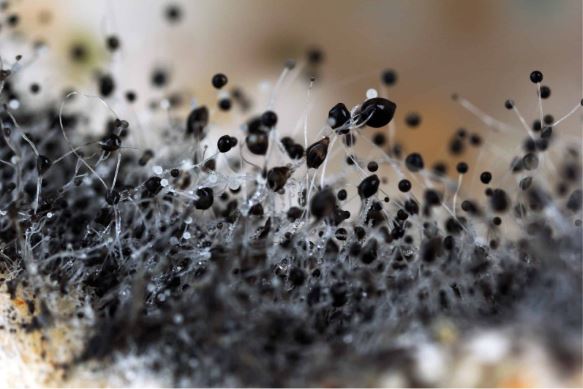Imagine an unseen intruder lurking within the walls of your home, quietly spreading its harmful influence while you remain unaware of its presence. This silent invader is none other than mold, a common fungus that thrives in moist environments and can wreak havoc on your health.
Time plays a critical role in the impact of mold on your well-being. The longer mold remains undetected and untreated, the greater its toll on your health. In this article, we will explore how time becomes a crucial factor in the destructive effects of mold and what steps you can take to protect yourself and your loved ones.
Understanding the Threat of Molds
Mold is an omnipresent organism that exists naturally in the environment. Indoors, it grows in areas with excessive moisture, such as bathrooms, kitchens, basements, and areas affected by water leaks or floods. Mold grows by dispersing microscopic spores into the atmosphere.
When inhaled or come into contact with the skin, these spores can cause health problems, particularly those with sensitivities or pre-existing respiratory conditions.
In the early stages, mold growth might be inconspicuous and easily overlooked. However, the fungus can spread and colonize other areas over time, leading to visible signs such as discolored patches on walls, musty odors, or even structural damage.
How Does Time Affect Mold Growth?
Time is the ally of mold. It will capitalize on any damp, humid environment and flourish when given the opportunity. As mold spores settle and find suitable surfaces, they can begin to colonize and form a complex web of interconnected networks known as mycelium. This process can occur within 24 to 48 hours after exposure to moisture.
As time passes, mold growth can escalate and spread throughout your living spaces. What starts as a minor issue in a bathroom corner can soon become a widespread infestation if not promptly addressed. The more extensive the mold growth becomes, the greater the potential health risks it poses to occupants.
Health Implications of Prolonged Mold Exposure
- Respiratory Problems: Breathing in mold spores can irritate the respiratory system, leading to coughing, wheezing, and throat irritation. For individuals with asthma or allergies, prolonged mold exposure can worsen their symptoms and make it difficult to manage their condition effectively.
- Allergic Reactions: Mold is a common allergen, and repeated exposure can trigger allergic reactions in susceptible individuals. Allergy symptoms may include sneezing, runny nose, itchy eyes, and skin rashes.
- Chronic Sinusitis: Long-term exposure to mold can contribute to chronic sinusitis, a condition characterized by persistent inflammation of the sinuses, facial pain, and congestion.
- Weakened Immune System: Mold releases mycotoxins, which are toxic substances that can suppress the immune system. A weakened immune system becomes less effective in defending the body against infections and illnesses.
- Neurological Effects: Some studies suggest that mold exposure may be associated with neurological symptoms such as headaches, dizziness, and memory problems. The exact mechanisms are still being investigated, but it is believed that mycotoxins may play a role in these neurological effects.
- Respiratory Infections: Mold growth can create a favorable environment for bacteria and viruses to thrive in the respiratory tract, increasing the risk of developing respiratory infections like bronchitis and pneumonia.
- Long-Term Health Conditions: Prolonged exposure to mold has been linked to the development of long-term health conditions, including chronic lung disorders, chronic fatigue syndrome, and even autoimmune diseases.
Taking Control: Protecting Yourself from Mold
Time may work in favor of mold, but you can take control of the situation and prevent its detrimental effects on your health. Here are some steps you may take to protect your house and yourself:
Regular Inspections: Regularly inspect your home, especially in moisture-prone areas. Look for signs of mold growth, such as visible patches or a musty odor.
Address Water Issues Promptly: Address any water leaks, spills, or floods immediately. Dry and clean the affected areas thoroughly to prevent mold growth.
Keep the Ventilation Proper: Ensure your home has adequate ventilation, especially in high-humidity areas like kitchens and bathrooms. To lower the amounts of moisture, use exhaust fans.
Control Indoor Humidity: Monitor indoor humidity levels using a hygrometer and aim to keep them between 30% to 50%. Dehumidifiers can aid in preserving ideal levels of humidity.
Proper Cleaning: Clean regularly and parts that are dry and likely to support the formation of mold, such as basements and bathrooms. Use products that ease mold-resistant to discourage mold colonization.
Seek Professional Help: If you suspect mold growth in your home or experience unexplained health issues, consider hiring a professional mold inspector or an indoor air quality expert. They can conduct a comprehensive assessment and provide guidance on remediation and prevention.
Conclusion
Time is crucial when it comes to mold. The longer mold remains undetected and untreated, the greater the risk it poses to your health and the integrity of your home. Early detection, swift action, and preventive measures are key to keeping mold in check and safeguarding your well-being. By taking control and proactively addressing mold issues, you can ensure a healthier and safer living environment for yourself and your family, where time is no longer a friend of mold but an ally in preserving your health.

